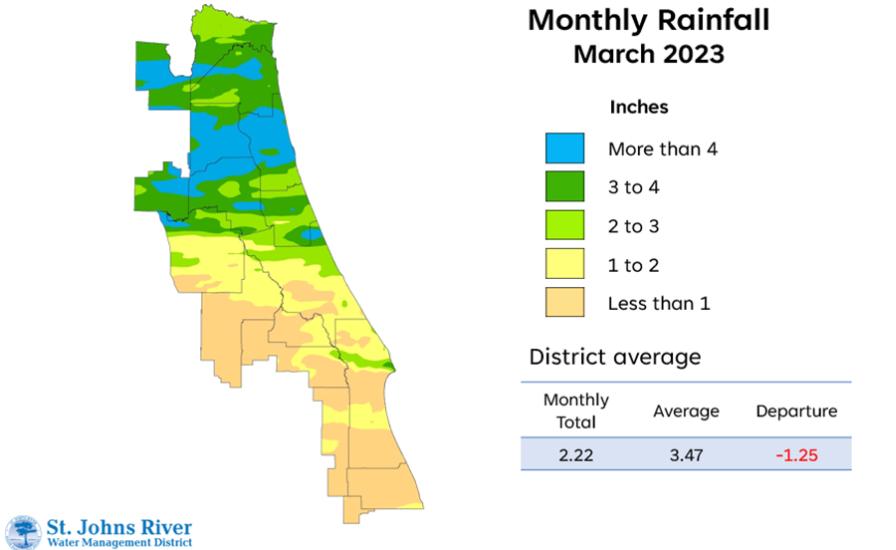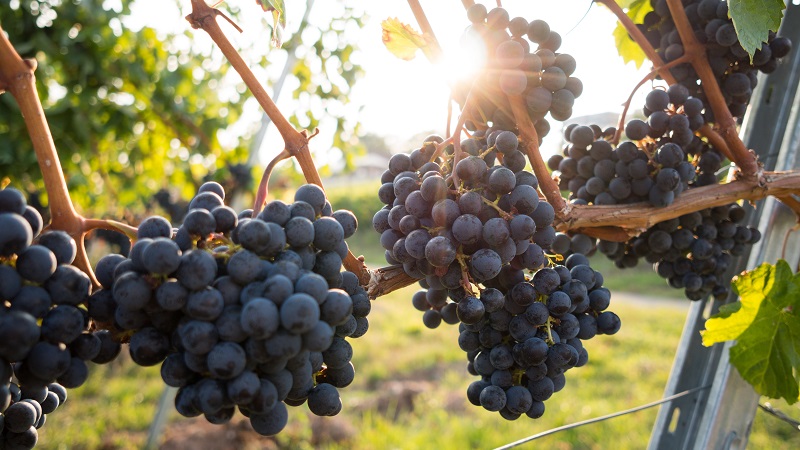Severe Drought Dialing up Across Parts of the Sunshine State
According to the latest report from the U.S. Drought Monitor, the 18-county region in North-Central Florida covered by the St. Johns River Water Management District (SJRWMD) is experiencing varying degrees of drought conditions. Rainfall in the northern counties was average to above average last month, while dry conditions continued in the south with seven counties receiving less than one inch of rain in March.
At the end of March, groundwater levels are well above drought indicator levels with a majority of the District falling within the normal to high range.
So, how dry has it been lately? Here are some standout stats provided by SJRWMD officials emphasizing the various drought conditions across North-Central Florida.
- Districtwide, March rainfall averaged 2.2 inches, which is 1.25 inches below the average for the month.
- Districtwide, the cumulative rainfall total for the past 12 months is 51.01 inches, which is 1.19 inches below the long-term average.
- There were seven counties with county-wide totals less than one inch: Indian River, portions of Orange, Osceola and Okeechobee, Brevard, Lake, and Seminole counties.

In turn, burn bans were issued earlier this month in multiple counties, including Brevard, Indian River, Lake, Orange, Osceola, and Seminole.
Southwest Florida has seen a mixed bag of weather lately, according to Mongi Zekri, UF/IFAS Multicounty Citrus Agent IV based in LaBelle. “We are doing OK in Southwest Florida in terms of rainfall,” he says. “It was very dry a couple of weeks ago, but luckily, we have been getting frequent rain lately.”
This goes to show how fickle the seasons in Florida can be. March and April typically represent the peak of Florida’s dry season. Drought conditions have continued into April, which (coincidentally) is the same time initial Atlantic Hurricane Season forecasts release. Forecasters are noting a shift in the climate phase — from La Niña to neutral conditions. They eventually see El Niño taking over maybe sometime this summer. See what else the experts are predicting for 2023.
Severe drought can put much stress on crops. Zekri says citrus trees are impacted by water stress in multiple ways. In particular: The number of fruit, fruit size, and tree canopy are reduced with water stress. Extension growth in shoots and roots, as well as leaf expansion are all negatively correlated with water stress. “Growers cannot afford water stress or water restrictions during critical periods,” he adds. “Irrigation is not only essential during the springtime, but it is also important during dry falls to minimize premature fruit drop.”
While certain parts of Florida are currently parched, a few have had more than enough rainfall to deal with lately. Widespread storms led to an epic rain event for the Fort Lauderdale area last week. Reports of more than 25 inches of rain in a 24-hour period made major headlines. Other parts in that region received at least of foot of precipitation during the same time.
The wet season in Florida normally begins early to mid May when seabreeze thunderstorms become the norm every afternoon.
How would you describe the rainfall amount in your area over the last six weeks?
- Too dry (80%, 8 Votes)
- About average (20%, 2 Votes)
- Too wet (0%, 0 Votes)
Total Voters: 10
How’s the weather been in your neck of the woods lately and how is it affecting your ag production? Leave a reader comment below.








